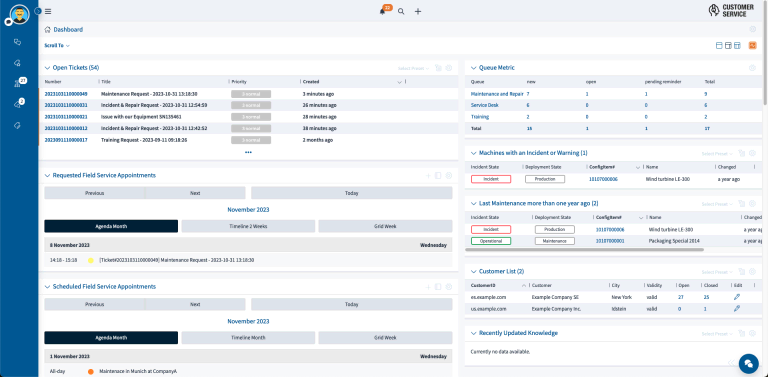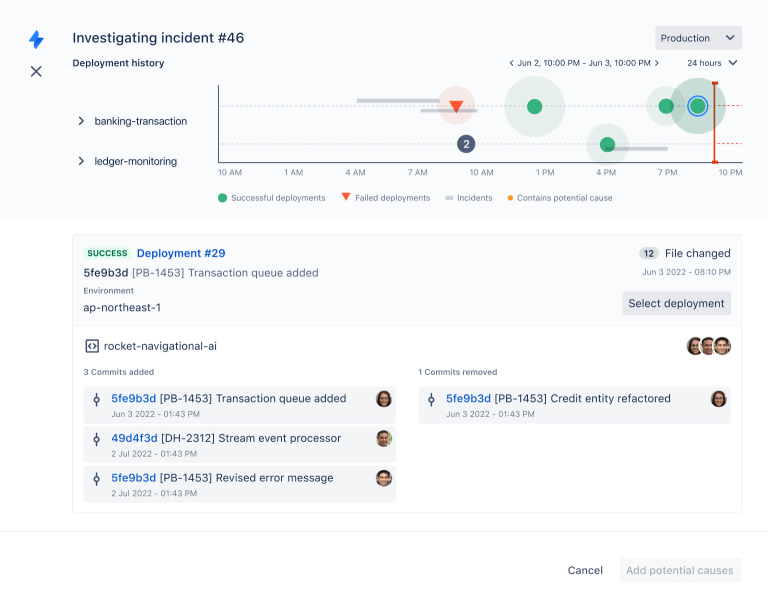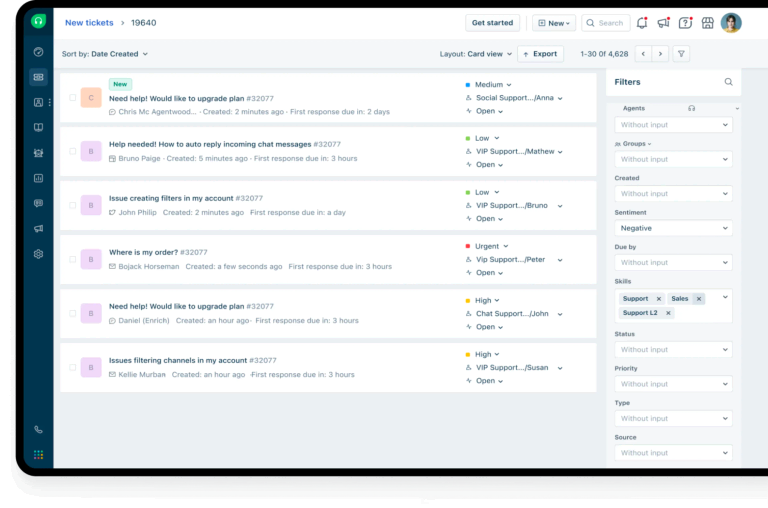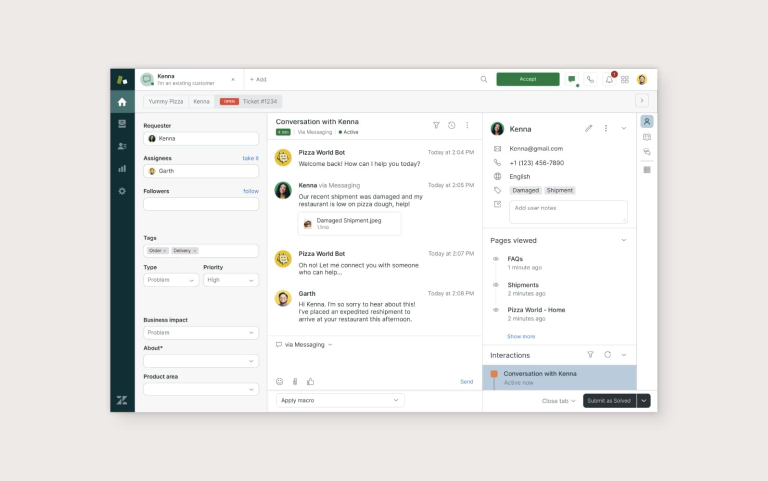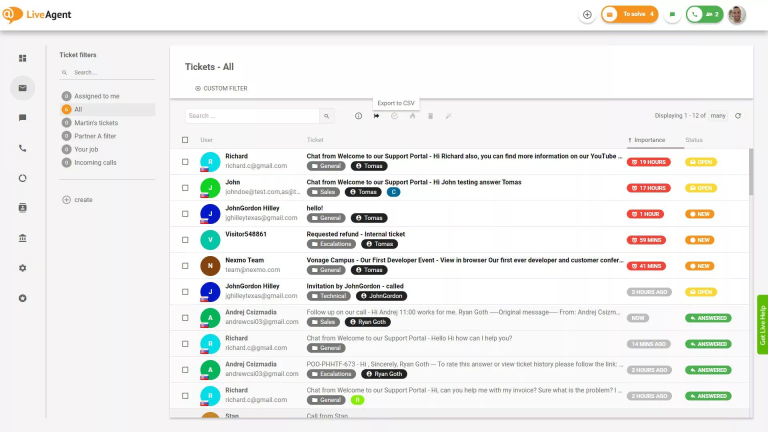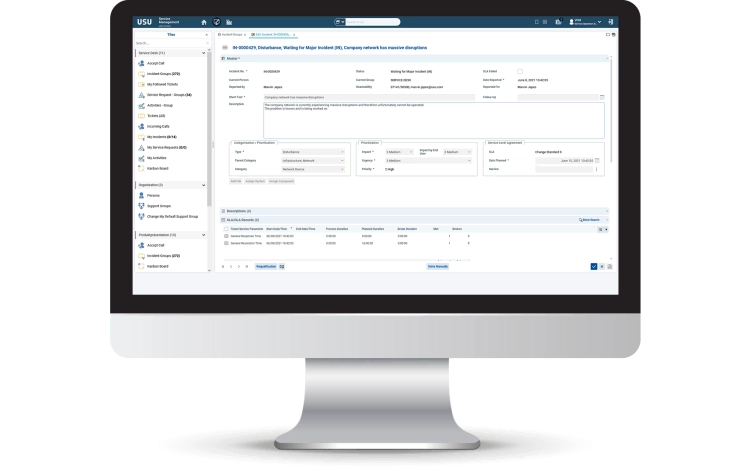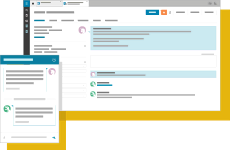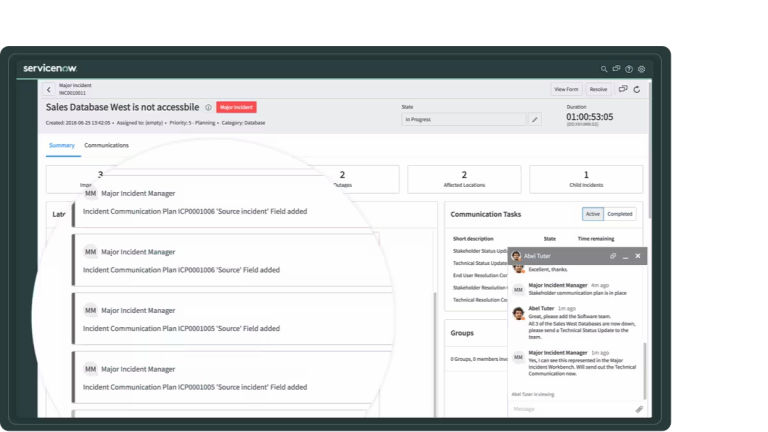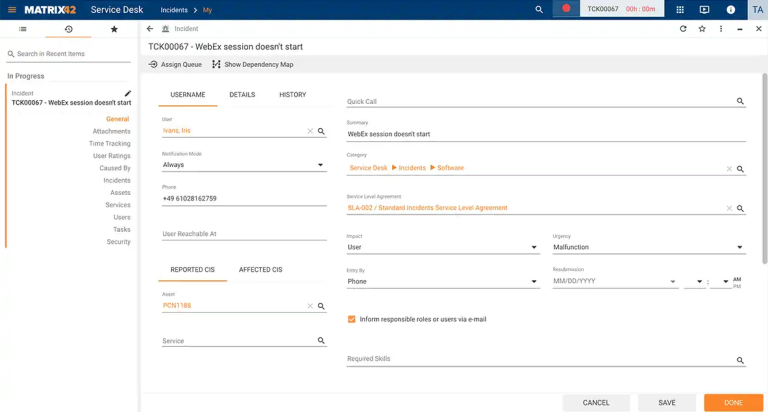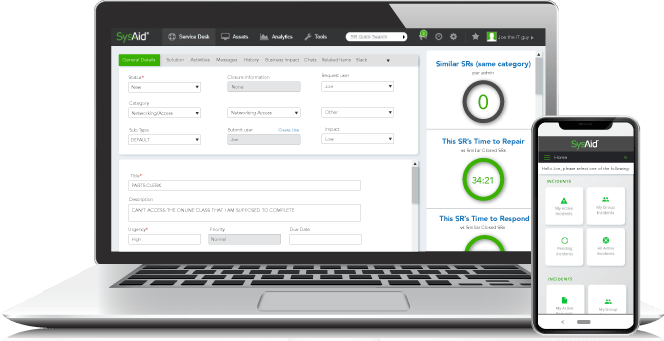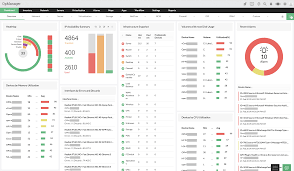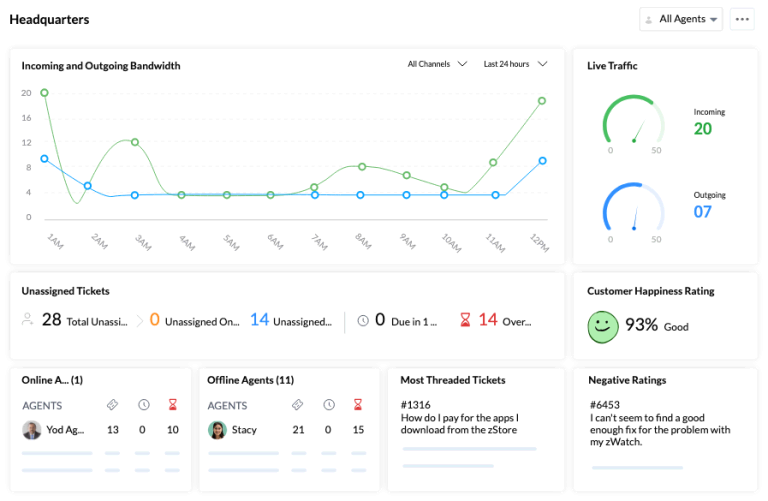Ticketing systems make communication and work processes simpler, more efficient and clearer. They can be used to optimize help desks, customer service, IT services and other areas in a structured manner. They can often be customized to meet the requirements of individual use cases.
Several providers offer ticketing services and software solutions on the market, but which system will support your company most effectively? Use the Software Guide 2024, to compare the best ticketing systems.
Key features of ticketing systems
Ticketing systems control communication between service recipients and providers. This creates a communication chain that ensures transparency and can be tracked centrally.
Both free and paid alternatives are available. The choice depends on the individual requirements of the company. In principle, however, the following applies: if companies want to benefit comprehensively from ticketing systems, the way to go is via paid solutions that are tailored to their use cases.
The key features, user-friendliness, customer service and value for money are important factors. • The time in which the system goes "live" - i.e. is implemented - should also be taken into consideration.
A basic distinction must be made between cloud (access via web browser) and on-premises (local, own hosting) solutions for ticketing systems. Today, cloud solutions are most common.
Compliance and adherence to applicable legal regulations, such as retention obligations and data protection requirements, also play an important role.
The number of requests is often decisive: the more of them there are, the more worthwhile an individually configured ticket system is, as the requests can be better distributed among different teams. For smaller companies with comparatively few requests, even basic solutions may be sufficient.
Quick overview
Ticketing systems and their areas of application
Ticketing systems can make every day work much easier. By ensuring efficient service — as part of a helpdesk solution — they also increase customer satisfaction. From use in the contact center and IT support to HR management or field service, they play an important role.
They replace confusing conversations over the phone and email, bringing all communication – regardless of which channel (including various social media and messaging platforms) it was initiated via – together in a central system.
Why should companies use ticketing systems?
Enabling efficient and structured communication via a ticketing system pays off in many ways. The reasons why companies use ticketing systems — both for external and internal processes — are highly individual.
Here are some of the most important reasons why companies use ticketing systems :
- Manage communicative processes efficiently: Inquiries, complaints and problems can be conveniently and efficiently recorded, structured, prioritized and managed.
- Better customer service: With a ticketing system, companies can respond to customer inquiries more quickly, in a more structured way and with fewer errors.
- Tracking and transparency: Companies can monitor the status of a request in real time, which not only increases the overview but also the scope for action.
- Analysis and data centralization: With the help of ticketing systems, companies can collect and analyze data to improve their services and optimize business processes. This will become increasingly important as growing businesses seek to speed up work with AI – which, of course, will leverage this data as an input.
- Automation: By automating routine tasks and other processes, ticketing systems make workflows more efficient and reduce errors.
- Improved collaboration: Tasks can be assigned within the ticket and information can be exchanged. The information and status of the ticket always remain traceable.
Important considerations when comparing ticketing systems
In order to assess ticketing systems appropriately, you should pay attention to a number of factors. These include the following:
- Key functions and features:
- Service portal / interface
- Knowledge management
- Search
- Dashboard
- User roles and rights management
- Status, assignment, and prioritization of tickets
- Automation
- Business process management
- Encryption
- Reporting and tracking
- User-friendliness
- Vendor’s customer service
- Price-performance ratio
- Recommendation rate by peers
- Managed (cloud) / on-premises options
- “Go live” (time for implementation)
Ticketing systems in comparison
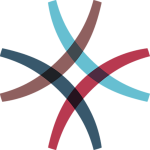
OTRS has a long history as a software developer and provider of IT service management solutions. The company began with a Ticketing systems in 2000 and was officially founded in 2003.
Since then, the Ticketing systems of the same name OTRS – formerly: Open Ticket Request System – has undergone numerous developments with different versions. Today’s interface is fundamentally different from the earlier versions.
While OTRS originally started as an open source project, the software is now available for a fee as a cloud version (managed) or on-premise (self-hosted).
Flexible and universally applicable, the OTRS service management solution is designed to optimize communication and workflows. In contrast to some competing products, the advantage is that the software comes directly from the manufacturer and is constantly being optimized.
With OTRS, users benefit from a range of features such as business process management, structured multi-channel communication, detailed information management and reporting. The tickets are organized in queues, which provides an overview and clarity for processing. Interfaces for integrating other software – such as SAP – are available.
Clear advantages include a positive price-performance ratio, good customer service and rapid implementation within a few days. For IT service management, OTRS offers automated ITIL®4-compliant processes and meets high standards in terms of security and compliance.
Important customers include Lufthansa, Airbus, IBM, Porsche, the German Federal Office for Information Security, the Max Planck Society, Toyota and Hapag-Lloyd. OTRS offers various service packages (silver, gold, titanium and platinum) for its solutions. Pricing information is available on request.
The Australian company Atlassian is known for its cloud services, such as the project management tool Jira Software. The software manufacturer’s repertoire also includes a ticketing system called Jira Service Management.
Atlassian promotes Jira Service Management as a simple and affordable ticketing software. It allows developers, IT operations and business teams to collaborate quickly — on one platform. Tasks can be managed across teams and tracked throughout the entire company. The system can be adapted to individual requirements and is continuously scalable.
One advantage is the links with other tools in the company so that their data and contexts can be used. For developers in particular, Atlassian promises low effort as well as the acceleration and problem-free provision of changes.
The functions include the management of requests, incidents, problems, changes, assets, and configurations. As a cloud solution, Jira is free for up to three agents: costs can be estimated as your needs grow.
Freshdesk is a help desk software from the Californian manufacturer Freshworks. It offers customer service with ticketing, automation and self-service as well as omnichannel support.
According to Freshworks, important functions include the management of support processes in a central location and the ability to process requests quickly across many channels. Communication is supported via email, chat, telephone, website and social media.
There is a free plan that covers the basic functions, as well as paid versions for expanded use cases.
The main sectors in which Freshdesk is used are service providers, real estate, healthcare, and insurance.
The Californian company Zendesk provides its Zendesk Support Suite as a complete solution for customer service. Key functions include omnichannel support, automation and workflows, reports and analyses and AI-supported self-service.
Zendesk supports email, phone, chat, Instagram and WhatsApp, among others. A mix of personal communication and AI-based controls and bots is used. The functions and processes can be controlled from a central workspace. Numerous integrations are designed to optimize collaboration.
Its strengths include user-friendliness and the fulfillment of all customer service requirements.
- Video
- Solution
LiveAgent, based in Bratislava (Slovakia), sees its help desk software as an all-in-one solution for customer support. Using various functions and integrations, users can connect with their clients and interested parties.
As a central platform, LiveAgent combines the most important support and communication processes. These include emails, phone calls, video calls, social media, messengers, and chats. Automated tasks and team collaboration options are designed to ensure efficiency.
The company advertises quick setup and excellent customer support as significant benefits. Above all, users appreciate the fact that the software meets their requirements.
The German and globally active software manufacturer USU offers an IT Service Desk, which it describes as a modular complete solution for IT support. In particular, the Ticketing systems are used to resolve critical faults. The IT Service Desk software is based on ITIL®-based processes. However, the solution can also be used for other service areas.
Tickets can be submitted manually, by e-mail, self-service portal, an event monitoring system, SMS or any interface. The system automatically monitors response times in accordance with applicable service-level agreements. Problem management and change management processes can also be integrated for more complex cases.
Various functions are offered, such as the automatic classification of tickets using AI, active knowledge management, alerting for urgent fault messages and troubleshooting (root cause analysis) using the CMDB (Configuration Management Database).
USU advertises an increase in efficiency and quality, a reduction in costs and satisfied users. The company provides a free trial version.
- Video
- Solution
The IT service management software TOPdesk is a standard tool from the Netherlands. It offers functions such as the management of tasks, knowledge and assets, reports and dashboards as well as self-service. Other tools can be connected via interfaces.
TOPdesk enables companies to have members of different departments work together on a central platform. Incident and asset management form its core areas.
The manufacturer advertises quick and easy implementation, uncomplicated usability (including independent optimization) and personal advice. TOPdesk is available in the three packages “Essential”, “Engaged” and “Excellent”. Prices are available on request.
ServiceNow is an American solution for IT service management. The platform is offered exclusively as a cloud-based solution and provides cross-company workflows for ITSM. With the help of AI and analytics, it is possible to make predictions and automate repetitive tasks.
According to the company, the benefits include providing ITSM on a single platform, improving IT productivity, creating robust service experiences, gaining new insights and avoiding problems. Key functionalities include incident management including knowledge base, reporting, and self-service.
ServiceNow offers customized price offers, which can be requested via the website. Target groups include DevOps and virtual agents.
Matrix42 is a software manufacturer from Frankfurt am Main, Germany. Its solution for IT service management is designed to automate and efficiently organize service desks.
Matrix42 enables the management of incidents, changes, problems, service level agreements and configurations as well as service desk analyses. The provider claims to increase team productivity, improve service delivery and simplify asset management. Some add-ons, such as SAP Compliance and Remote Assistance, are available as options.
Users can choose between a cloud solution and an on-premises implementation. The product is based on ITIL best practices. In addition to ITSM, Matrix42 can also support departments such as HR, facility management and financial accounting.
Quotations and a free trial version can be requested on the website.
- Video
- Solution

SyAid is an ITSM solution with integrated asset management. The developer pursues an automation approach that includes tickets, tasks, self-service, and workflows to which the tool is designed to adapt.
SysAid also mentions orchestration as a benefit, whereby tools such as Slack or Sage can be integrated. According to SysAid, other advantages include a faster service, simpler workload management and a smooth user experience.
Overall, this solution is user-defined: Users can tailor it to their needs from templates and forms. Prices are calculated individually, and a demo can be requested on the website.
- Video
- Solution
ManageEngine promotes itself with high-quality and easy-to-use IT management products. The provider wants to enable IT departments to solve their challenges — from monitoring the environment to protecting against cyber threats.
According to the vendor’s description, ManageEngine enables high productivity and offers a clear user interface for easy implementation. Integrations and customized solutions are also among the benefits described.
ManageEngine offers various software solutions for IT and network management, including operations management, security management, automation, and standardization.
- Video
- Solution
Zoho Desk offers support software for customer service. The solution is designed to simplify processes, increase productivity and improve the customer experience. To achieve this, the provider focuses on omnichannel and self-service, as well as sentiment analysis and service level agreements.
For employees, Zoho promotes context-based support, various work modes and a highly developed response editor. Workflows and automation, satisfaction ratings and AI predictions are also available.
The applications are aimed at the areas of sales, marketing, HR, help desk and finance. The provider is addressing companies of all sizes and industries.
- Video
- Solution
Tips for choosing a suitable ticketing system
Not every ticketing system is suitable for every company. The area of application is the main criterion for the decision. The channels to be supported, the number of inquiries and service employees also play a role in deciding which ticketing system is suitable.
Here you will find important tips to help you choose.
Focus on users and individual requirements
Users should know what ticket system features are important for them and their company. Best practices and recommendations play a major role in the selection process. What is more important, however, is how it fulfills individual requirements and solves problems. You should therefore ask yourself which system makes the most sense for your specific case. In this context, it has enormous advantages if the software can be customized.
One factor that is often underestimated is user-friendliness. Ideally, users should be able to intuitively understand the functions that are important to them. In the actual application, you should not have to follow the processes of the software, but should be able to use them to your own advantage in your own work.
Extensive functions, automation and intelligent connections are of little use if users do not use them to the advantage in their daily work. First and foremost, users should be able to feel comfortable with the respective solution.
Consider versatility
Some Ticketing systems are highly specialized: Certainly, built-in automations, AI tools and defined integrations are not to be sneezed at. However, a ticket system should also be able to be used as widely as possible within a company. To achieve this, it must be as versatile as possible and offer intuitive functions for various users.
If, for example, the solution is too tightly focused on IT-related use cases, its potential is wasted. Instead, it would be advantageous if the solution could also be used for HR, for example.
“Go live” – attach importance to uncomplicated implementation
Many interested parties concentrate relatively one-sidedly on the functions of Ticketing systems, and then encounter problems during implementation. An often underestimated factor is, therefore, being able to put a ticket system into operation in the shortest possible time.
Systems can be implemented at different speeds: A solution that requires a high level of custom development to get up and running will take far longer to get started with than one which can be spun up in days and then adapted throughout its life.
Pay attention to vendor support and services
The support options that ticket system providers offer can prove just as important as good functionality. Support staff should be available and able to provide competent information as quickly as possible, and not just in serious cases.
Multi-language support is particularly advantageous, as it allows problems to be resolved quickly and without language barriers. This factor should not be underestimated when it comes to the subtleties of descriptions and solutions.
In general, customers should be able to contact support teams conveniently, easily and as immediately as possible.
Cloud vs. On-Premises – make a selection
Ticketing systems in the cloud (accessed via a web browser) have been popular solutions for some time now. Because they are easy to access and users do not have to worry about hosting, they promise a simple path to ticketing. For example, the provider carries out the maintenance, which significantly reduces the effort, possible security gaps and the tying up of IT resources.
Nevertheless, local hosting (on the company’s own servers) does not necessarily have to be a disadvantage. In this case, for example, users have more control and are not dependent on a third-party provider: Updates, configurations etc. can be managed purely according to your own specifications.
There are also security aspects to consider. In the cloud, the dependency on the provider is also greater here, although this can also prove to be an advantage. Software manufacturers are generally well positioned when it comes to security issues and can quickly initiate the right measures.
If a solution is available in both versions — cloud and on-premises — users can decide for themselves and proceed according to their own preferences.
The performance must be right – at a fair price
In principle, companies should know exactly what benefits and advantages they expect from a ticket system. In short: the performance and not the price should be the top priority. If the performance is right, the price usually pays for itself.
Nevertheless, companies do not necessarily have to purchase the most expensive ticket system – especially not if other solutions can also meet the individual performance requirements. In this sense, price can certainly be the decisive argument. (However, this should not be at the expense of important factors such as essential functions, customer service or security.)
FAQ
Why should companies use a ticketing system?
With a suitable ticketing system, tasks, requests, incident management and other requirements can be organized and structured much more efficiently. An important factor is that all relevant communication can be viewed in its entirety. The categorization and sorting of information in such a system also contribute to the overview, while escalation times and process management enable efficient processing. In general, efficiency, security, and good communication management play significant roles.
What must a good ticketing system be able to do?
A key functionality of a ticketing system is that it stores requests from very different channels in one central location. Being able to access communication in context is an important factor. Adequate process management, information management and reporting are also significant. Furthermore, automation functions increase efficiency.
When does a ticketing system make sense?
In principle, a ticketing system makes sense for all companies that are confronted with a certain number of inquiries and processes. This is especially true if these come in via various channels such as email, chat, telephone, social media or messenger services. When it comes to efficient processing, structured processes, overview, security or avoiding errors, a ticketing system proves to be extremely useful.
What is a ticketing system in IT?
In IT, a ticketing system organizes all requests and inquiries that reach a company’s IT department. It provides centralized IT service management, enables usage of the ITIL framework, and represents a central customer portal. Such a system can also be used to involve other departments in the relevant processes and make services more accessible to customers.
Companies must decide individually which ticketing system best meets their requirements. However, the ticketing systems comparison in this article can provide significant support in the selection process. Various criteria play a role, but ultimately, it is always about the extent to which a software can support a company in a targeted manner.
In some cases, a basic tool can help. Often more flexibility is needed than a basic tool can offer: Users should not have to restrict themselves too much, rather they should be able to benefit from versatility and a good user experience. A good ticketing system grows with the company and its requirements.
On the other hand, artificial intelligence and in-depth automation are trending topics. In this respect, it depends on the extent to which it actually makes every day work easier and more efficient. In short, the focus should be on which features bring real value-added benefits.
Ultimately, the focus is always on the core functions. Software must be functional, as intuitive as possible, reliable, secure and provide good service. Solutions that bring all of this together are the most useful.
